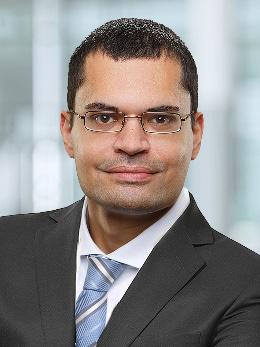Equity market update and IPO compass

Capital Markets Team —
November 2025


Capital Markets Team —
November 2025
European IPO markets continued to build on their regained momentum in October, with several high-profile listings priced during the month. A strong pipeline, featuring numerous well-known German companies, suggests that issuance activity could maintain strong traction.

Ralf Pfennig Partner Head of Deal & Capital Markets Services
The VIX ended the month at a capital market friendly level of 17.4, though the volatility swings observed in October signal heightened uncertainty.
Europe saw four sizeable IPOs priced in October, headlined by the year’s largest listing
Verisure’s EUR 3.2bn Nasdaq Stockholm debut, the year’s largest in Europe, was joined by Ottobock, Germany’s biggest IPO of the year at EUR 702m. UK listings Shawbrook and Princes Group rounded out the month, with Shawbrook marking London’s largest IPO in two years.
The Fed cut its key interest rate for the second consecutive time following its October meeting, by 25 basis points to a target range of 3 75-4 00%, as inflation concerns continue to take a backseat to signs of a softening labor market.
Note: 1) See slide 7 for index definitions.

European markets hit record highs in October but closed the month mixed: The STOXX Europe 600 rose 1.3%, while Germany’s DAX slipped -0 6% US markets stayed positive, with the S&P 500 closing October up 1.9%. Check whether your business is ready to go public at:
In the US, what was expected to be one of the busiest Octobers for IPOs in years turned subdued as the Securities and Exchange Commission (SEC) froze filing reviews due to reduced staffing during the government shutdown.
Following its meeting on October 30, the ECB kept the deposit rate unchanged at 2.00% for a third consecutive time. With inflation hovering near the 2.00% target and growth holding steady despite trade-tension headwinds, the central bank saw no immediate need for further adjustments – consistent with its longstanding approach of maintaining policy flexibility.
Meanwhile, the HCOB Eurozone Manufacturing Purchasing Managers‘ Index (PMI) edged up to 50.0 in October, from 49.8 in September, sitting exactly at the threshold between expansion and contraction.
The Fed, operating under a dual mandate of price stability and full employment, cut interest rates for the second consecutive time on October 29, by 25bps to a target range of 3.75-4.00%, as inflation concerns continue to take a backseat to signs of a softening labor market. The ongoing federal government shutdown since beginning of October has restricted access to official economic data, adding uncertainty to the outlook and contributing to the Fed committee’s “strongly differing views” on another rate cut this year Despite this, markets continue to price in another reduction at the Fed’s December meeting, albeit at a lower probability than before.
October lived up to its reputation as one of the most volatile months for equities. Despite this, US stock markets maintained their upward trend, with the S&P 500 and Nasdaq hitting new record highs European markets also reached new all-time highs but closed the month mixed.
The STOXX Europe 600 climbed 1 3% in October, while the FTSE 100 gained 2.9%, marking their fourth straight monthly advances after both touched new all-time highs late in the month. Germany’s DAX reached an alltime high early in the month but ended down -0.6%, while the MDAX finished -2.3% lower. Markets were supported by stronger-than-expected corporate earnings, resilient Eurozone economies bolstered by public infrastructure investment plans, and broadly stable inflation. Positive spillover from US markets – with some support from sentiment following the US-China trade truce and the Fed’s October rate cut – also contributed. Nevertheless, persistent trade and geopolitical risks, alongside ongoing political uncertainty, particularly in France, remain significant headwinds.
The S&P 500 advanced 1 9% while Nasdaq gained 4 3% in October, marking their sixth and seventh consecutive monthly increases, respectively. This momentum was driven by the Fed’s October rate cut, easing tensions in USChina trade relations, robust corporate earnings, and sustained enthusiasm around AI – further amplified by new deals and partnerships in the sector. However, investor sentiment was tempered by the Fed’s hawkish stance on a potential December rate cut, ongoing concerns over the government shutdown, job market uncertainties, and signs of cautious consumer spending.
October, historically one of the most volatile months for markets, saw the VIX surge above 25 mid-month amid political uncertainty and renewed trade tensions. Volatility eased toward month-end, with the VIX closing at 17.4, below the 20-point threshold typically seen as the dividing line between stable and stressed market conditions.
Source FactSet. KPMG, Germany, 2025.
Source: FactSet. Closing prices as of 31 October 2025.
European equity capital markets extended their recently regained momentum in October, with several September-launched IPOs pricing this month alongside new offerings. In contrast, US IPO activity slowed notably amid the US government shutdown.
Europe saw four sizeable IPOs priced in October, headlined by the year’s largest listing: Swiss-based security firm Verisure, backed by private equity group Hellman & Friedman. Verisure started trading on Nasdaq Stockholm on October 8, raising EUR 3.2bn1 at a total market capitalization of EUR 13.7bn2, supported by strong cornerstone demand totaling EUR 1.6bn.
A day earlier, German prosthetics manufacturer Ottobock debuted on the Frankfurt Stock Exchange, marking Germany’s largest IPO of the year and the month’s second-largest IPO The transaction raised EUR 702m 1 , reaching a market capitalization of EUR 4.2bn2, with cornerstone commitments of EUR 240m .
Two UK-based IPOs rounded out October’s major listings: British lender Shawbrook, backed by Pollen Street Capital and BC Partners, started trading on October 30 as London’s largest IPO in two years, followed by British grocery supplier Princes Group a day later.
Additionally, defense spin-off Thyssenkrupp Marine Systems commenced independent trading on the Frankfurt Stock Exchange on October 20.
In the US, what was expected to be one of the busiest Octobers for IPOs in years turned subdued as the Securities and Exchange Commission (SEC) froze filing reviews due to reduced staffing during the shutdown which began on October 1. Of the three sizeable US IPOs that priced, one had prior SEC approval, while two relied on a new “automatic approval” workaround. With many IPOs still on file, a resumption of normal SEC operations could trigger a surge in deal launches
Note: 1) Excl. Greenshoe, 2) At IPO
Source: Dealogic, KPMG, Germany, 2025.
Note: 1) European = Transactions on exchanges in Western Europe, Benelux & Nordics.
Source: Dealogic.
Note: 1) European = Transactions on exchanges in Western Europe, Benelux & Nordics.
Source: Dealogic.
Europe’s IPO market has been experiencing a strong rebound in the back-to-school season, with a diverse range of companies either launching or preparing to list. Among those reportedly gearing up for an IPO are TK Elevator (DE), KNDS (FR/DE), Vincorion (DE) and Spineart (CH), along with many others, as the European IPO pipeline continues to accelerate. While a few listings may occur before year-end, the majority of activity is expected in 2026, with most candidates currently focused on preparations for next year.
excl. SPACs, 2) At IPO, 3) Excl. Greenshoe, 4) Compared to issue price at IPO as of 31 October 2025 Source: Dealogic.
: Increase/ flat/ decrease in indicating factor; : positive/ neutral/ negative impact on IPO activity.
Definitions and methodologies of referenced survey data indices
The PMI is an economic indicator that measures the health of the manufacturing and service sectors through surveys of purchasing managers, focusing on factors like new orders, production and employment. The PMI ranges from 0 to 100, with a value above 50 indicating expansion and below 50 indicating contraction. Hamburg Commercial Bank (HCOB) and S&P Global collaborated to calculate the PMI in the Eurozone (Germany, France, Italy, Spain, the Netherlands, Austria, Ireland and Greece). The PMI is based on a representative sample of around 5,000 industrial and service companies.
The ESI reflects overall economic confidence, particularly in the European Union, based on surveys of various sectors such as industry, services and consumers Expressed as an index with a long-term mean of 100, an ESI above 100 indicates optimism and stronger confidence, while a value below 100 suggests pessimism and weaker confidence. The ESI helps gauge economic trends and outlooks.
The CCI is the arithmetic average of the balances (in percentage points) of the answers to the questions on the past and expected financial situation of households, the expected general economic situation and the intentions to make major purchases over the next 12 months. It is used as an economic indicator to gauge consumer spending behaviour. Values above zero percent (percentage points) indicate positive views of the economy, whereas values below zero percent (percentage points) indicate negative views, and a value of zero reflects an equal balance of positive and negative views.
Source: European Commission, S&P Global, MSCI.







